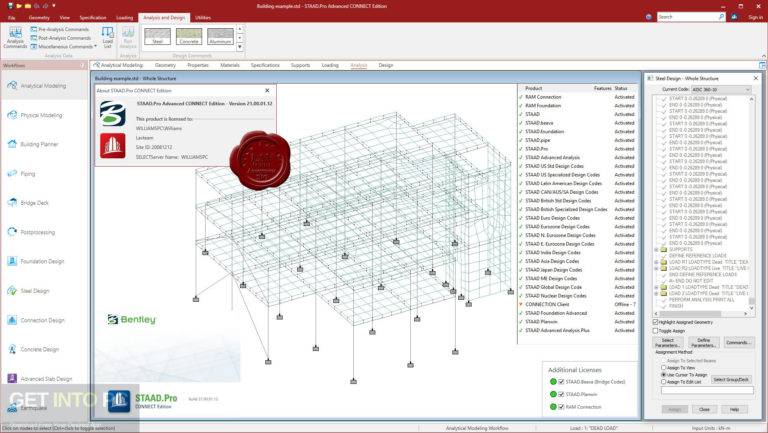

- #Bentley microstation v8i requirements how to
- #Bentley microstation v8i requirements software
- #Bentley microstation v8i requirements series
- #Bentley microstation v8i requirements simulator
This means that if you want to do something special with the working units, you have to do that in the V8 seed file. In contrast, when writing to DGN V8 files, the writer ignores these settings from the workspace and adopts the settings as read from the seed file chosen. See the DGN V8 Assume Master Units Equal Working Units reader parameter for further details on DGN V8 reading. These units are all relative to working coordinates. The feature coordinate units may be interpreted as Master Units, SubUnits, or as raw UORs.
#Bentley microstation v8i requirements how to
(Note, however, that the igds_fill_color attribute will override any solid fill color linkage specification if both are present.)īecause Design files support three interpretations of units, the IGDS reader and writer must be told how to interpret the feature coordinate units and how they will be converted to and from Units of Resolution (UORs).

Linkages may also be used to specify fill information for fillable IGDS area geometries such as Shape elements, and other application-specific data. (Note that the DGN V8 reader supports the interpretation of FRAMME linkages, but the writer does not.) The linkage values may be used to join elements with attributes stored in relational tables through the use of the Joiner or FeatureMerger Workbench transformers. The IGDS reader and writer support both user data and database linkages. Cells are complex elements used as symbols, and are treated as atomic entities by the FME.Įach IGDS file element may have one or more attribute linkages associated with it. This situation occurs when text elements are grouped together into a single complex element headed up by a text node, and when linear or polygonal features have more than 101 vertices (Microstation V7) or 5000 vertices (Microstation V8). The FME transparently handles such complex elements as single FME features. Complex elements solve this problem by physically grouping individual elements together into an object that will be manipulated as a whole. Individual design file elements must be less than a system-imposed maximum number of bytes. Tip: The IGDS reader and writer modules support both two- and three-dimensional Design files and cell libraries. For example, a text element has fields for font, size, and the text string in addition to the standard display attributes. Each element contains standard display information, such as its color, level, class, and style, as well as a number of attributes specific to its element type. The header contains global information including the transformation equation from design units to user coordinates, as well as the dimension of the elements in the file.
#Bentley microstation v8i requirements series
Format Informationĭesign files consist of a header, followed by a series of elements. See the Bentley Map XFM Design format for an alternative object representation. Note that XFM features handled by the DGN V8 Reader/Writer represent a normalized form of XFM features.


#Bentley microstation v8i requirements software
The software supports industry standards such as ASHRAE Standard 90.1-2004, ASHRAE Standard 140-2004 (BESTEST Models), LEED Energy Atmosphere Credit 1, U.K. The software predicts annual energy consumption, carbon dioxide emissions, and operating costs. Users of the software can create 3D analysis models from 2D floor plans with detailed thermal properties. The Hevacomp simulation engine is optimized for typical project configurations and to ensure compliance with regulatory requirements and industry best practices. The software provides to tools to design, analyze, and simulate building energy systems and ensure that the buildings continue to perform as predicted.īentley’s Energy Performance Series uses two differently purposed simulation engines to provide building energy design and analysis: the EnergyPlus engine, the standard developed by the DOE, and the independently developed Tas high-speed engine.
#Bentley microstation v8i requirements simulator
The Bentley program includes Bentley Tas Simular V8i, Hevacomp Simulator V8i, and Hevacomp Mechanical Designer V8i.


 0 kommentar(er)
0 kommentar(er)
